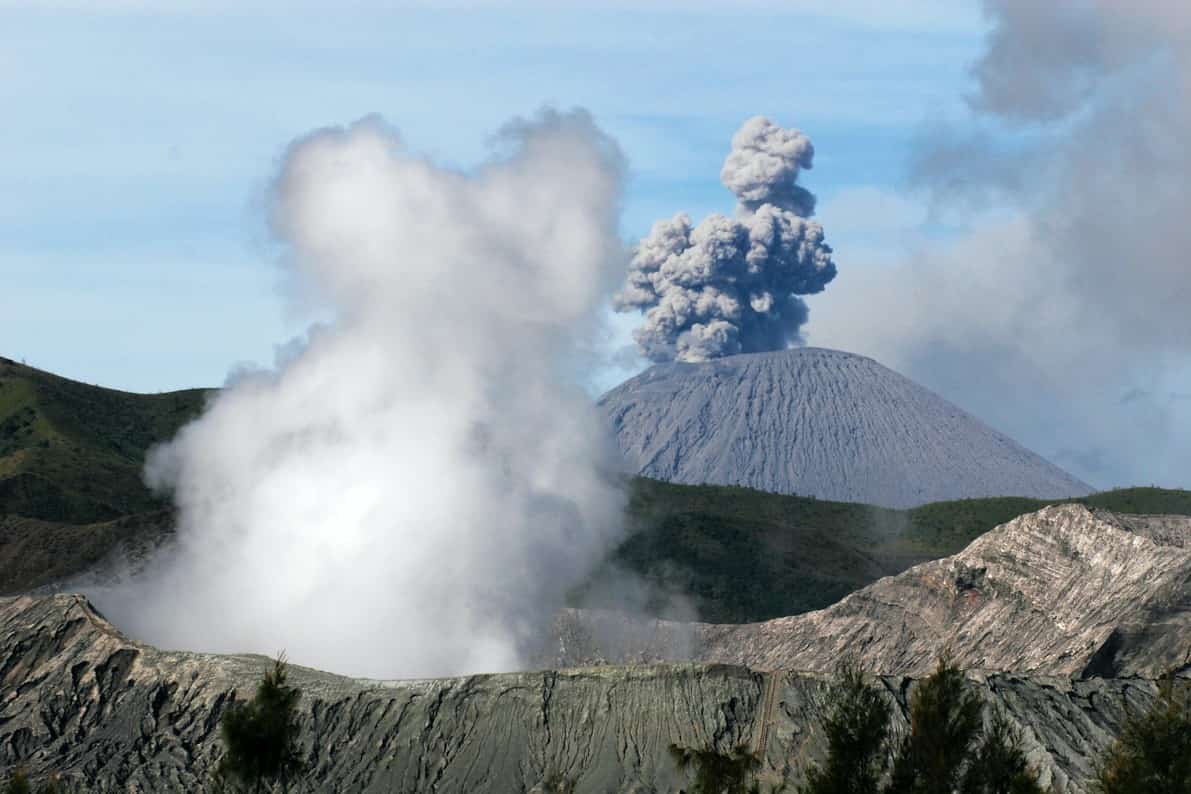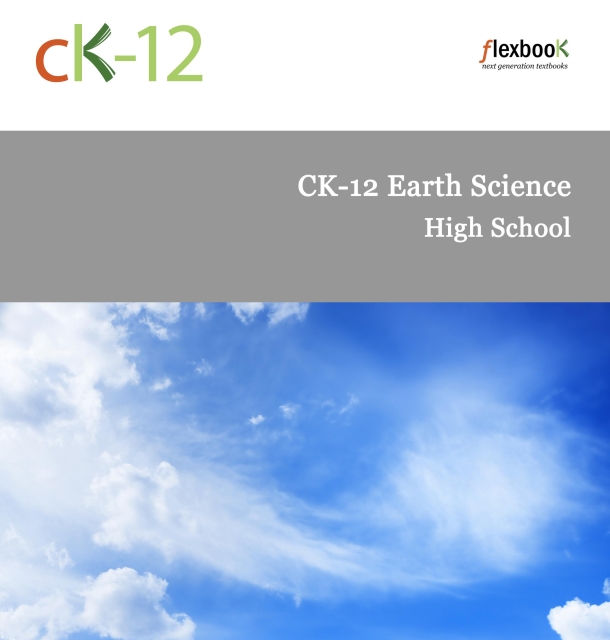These four free middle school Earth Science lesson units will help students investigate earth science in depth as they gain an understanding of the natural world and a curiosity that ignites a sense of wonder. These important insights can inspire students to take action on behalf of the environment and develop a lifetime commitment to its preservation. Earth science students will also benefit from the development of critical thinking and problem-solving skills, as well as be better prepared for future careers.
Table of Contents:
- Key Benefits of Middle School Earth Science Education
- Earth Science Lesson Unit: Energy in Earth Systems
- Earth Science Lesson Unit: Plate Tectonics
- Earth Science Lesson Unit: Earthquakes and Volcanoes
- Earth Science Lesson Unit: Weathering and Erosion
Key Benefits of Middle School Earth Science Education:
- Appreciating Natural Events: Earth science teaches students about weather patterns, climate change, natural disasters, and how Earth’s systems are all connected. This helps them understand how complicated and beautiful nature is.
- Developing a Scientific Mindset: Earth science lessons push students to ask questions, observe, do experiments, and look at data. This helps them develop a scientific mindset and deal with problems and challenges in a logical and evidence-based way.
- Understanding the Earth’s Systems: Earth science shows how all of Earth’s systems are connected, from the deep oceans to the complex atmosphere. This way, students can learn about the geological forces that shape our planet, the processes that control weather and climate, and how ecosystems stay in balance.
- Promoting Environmental Stewardship: Earth science classes stress how people’s actions affect the environment by teaching them about climate change, pollution, and resource loss. These lessons instill a sense of responsibility and promote environmentally friendly habits.
- Engaging Investigations: Earth science lessons often include hands-on activities, experiments, and field trips that help students remember what they’ve learned.
- Preparing for Future Careers: Students who study earth science can build the skills they need for careers in science, technology, engineering, and math. They can also go into geology, environmental science, meteorology, astronomy, and other fields.
- Building a Foundation in Scientific Literacy: Earth science teaches students the basics of the scientific method, which can help them make smarter decisions and use information more effectively.
- Developing Logical and Critical Thinking: Earth science is an inquiry-based, hands-on subject that makes students think deeply about data, figure out solutions, and come to their own conclusions.
Overall, earth science is an important subject for middle school students to learn because it provides them with the knowledge, skills, and attitudes they need to understand the world around them and to make informed decisions about their lives. It lays the groundwork for lifelong learning, scientific literacy, and environmental stewardship.
Earth Science Lesson Unit: Energy in Earth Systems
This Grade 6 Physical and Earth Science lesson unit examines energy in the earth’s systems and satisfies the 6th grade California Science Standards for energy in Earth systems as well as the Investigation and Experimentation Standards. By the end of the unit, students will understand that the sun is the primary source of energy for Earth’s systems. Solar energy enters the Earth in the form of visible light radiation. Convection currents transport heat from the sun through the atmosphere and seas. Conduction transports heat in earthly substances. Heat flow and waves, including water, light, sound, and moving objects, may all transport energy from one location to another. Energy is transported and converted from one kind of energy to another. Windmills, water wheels, heat from a peanut, solar-powered batteries, and balloons are examples of energy applications at work.
Download Complete Grade 6 Physical Science Energy in Earth Systems (92mb)
| Introduction and Conceptual Flow Narrative | Download PDF | |
| Planning Guide | Download PDF | |
| Conceptual Flow Graphic | Download PDF | |
| Pre-Assessment | A (Assessment File) | Download PDF |
| Lesson 1 Forms of Energy | 6.1 | Download PDF |
| Lesson 2 Potential and Kinetic Energy | 6.2 | Download PDF |
| Lesson 3 Energy Transfer and Transformation | 6.3 | Download PDF |
| Lesson 4 Thermal Energy Flow in Materials | 6.4 | Download PDF |
| Lesson 5 Wind Energy | 6.5 | Download PDF |
| Lesson 6 Energy from Water Wheels | 6.6 | Download PDF |
| Lesson 7 Peanut Energy | 6.7 | Download PDF |
| Formative Assessment #1 | B (Assessment File) | Download zip (3 PDF’s) |
| Lesson 8 Solar Energy | 6.8 | Download PDF |
| Lesson 9 Renewable-Nonrenewable Energy | 6.9 | Download PDF |
| Post-Assessment | C (Assessment File) | Download PDF |
Earth Science Lesson Unit: Plate Tectonics
This lesson unit focuses on plate tectonics and fulfills the 6th grade California Science Standards for plate tectonics and Investigation and Experimentation. By the completion of the unit, students will have learned: Plate tectonics explains significant aspects of the Earth’s surface as well as key geological events. The fit of continents, the position of earthquakes and midocean ridges, and the distribution of fossils, rock types, and ancient climatic zones all provide evidence for plate tectonics. The Earth is divided into three layers: the cold, brittle lithosphere, the hot, convective mantle, and the dense, metallic core. These layers differ in terms of density, content, and temperature (energy). Lithospheric plates the size of continents and seas move at centimeter-per-year speeds in response to mantle convection currents. Plate movement causes geologic phenomena such as earthquakes and mountain formations. Earthquakes are abrupt motions along faults in the crust, and volcanoes and fissures are places where magma reaches the surface. Earthquake epicenters can be established. The impacts of an earthquake vary depending on the size of the earthquake, the region’s distance from the epicenter, the local geology, and the kind of development in the region. Every plate boundary is a dynamic location that causes changes to the earth’s surface. Mountains and sea floor trenches can be described if the various combinations of crust movement at the boundary are understood. Large mountain ranges (such as the Himalaya) are generated when two continental plates meet. Deep sea trenches form as oceanic plate subducts. Even transform boundaries. entail significant pressure, which can modify land patterns and result in the development of minor mountain ranges. Plate tectonics is responsible for many of California’s geological characteristics, including those of the Channel Islands.
Download Complete Grade 6 Earth Science Plate Tectonics (37mb)
| Introduction and Conceptual Flow Narrative | Download PDF | |
| Planning Guide | Download PDF | |
| Conceptual Flow Graphic | Download PDF | |
| Pre-Assessment | A (Assessment File) | Download PDF |
| Lesson 1 Density Effects on Layers | 6.1 | Download PDF |
| Lesson 2 Layers of the Earth | 6.2 | Download zip (2 PDF’s) |
| Formative Assessment #1 | B (Assessment File) | Download PDF |
| Lesson 3 Convection Currents in the Mantle | 6.3 | Download zip (3 PDF’s) |
| Formative Assessment #2 | C (Assessment File) | Download PDF |
| Lesson 4 Continental Drift | 6.4 | Download zip (3 PDF’s) |
| Lesson 5 Seismic News | 6.5 | Download PDF |
| Lesson 6 Sea Floor Spread | 6.6 | Download PDF |
| Formative Assessment #3 | D (Assessment File) | Download PDF |
| Lesson 7 Plate Tectonics | 6.7 | Download zip (3 PDF’s) |
| Lesson 8 Dynamic Planet | 6.8 | Download PDF |
| Lesson 9 Channel Island Tectonics | 6.9 | Download PDF |
| Lesson 10 Mountain Building | 6.10 | Download PDF |
| Formative Assessment #4 | E (Assessment File) | Download zip (2 PDF’s) |
| Lesson 11 Density of Granite and Basalt | 6.11 | Download PDF |
| Post-Assessment | F (Assessment File) | Download PDF |
Earth Science Lesson Unit: Earthquakes and Volcanoes
This lesson unit focuses on earthquakes and volcanoes and is best taught after the Grade 6 Earth Science Unit: Plate Tectonics. Earthquakes and volcanoes are two observable manifestations of plate tectonics. The lesson meets the 6th grade California Science Standards for Earthquakes and Volcanoes, as well as Investigation and Experimentation. By the completion of the unit, students will have learned: Plate movement causes geologic phenomena such as earthquakes and volcanoes. Every plate boundary is a dynamic location that causes changes to the earth’s surface. Earthquakes are abrupt motions along faults in the crust, and volcanoes and fissures are places where magma reaches the surface. A variety of methods can be used to determine earthquake epicenters. The impacts of an earthquake vary depending on the size of the earthquake, the region’s distance from the epicenter, the local geology, and the kind of structure. Earthquake preparedness encompasses building construction design, building placement, and stockpiling supplies for a probable earthquake. Seismic activity in the form of volcanoes and earthquakes shapes major characteristics of California geology.
Download Complete Grade 6 Earth Science Earthquakes and Volcanoes (73mb)
| Introduction and Conceptual Flow Narrative | Download PDF | |
| Planning Guide | Download PDF | |
| Conceptual Flow Graphic | Download PDF | |
| Pre-Assessment | A (Assessment File) | Download PDF |
| Lesson 1 Earth Shaking Events | 6.1 | Download PDF |
| Lesson 2 Fault Formations | 6.2 | Download PDF |
| Lesson 3 A Model of Three Faults | 6.3 | Download PDF |
| Lesson 4 Up and Down Fault Blocks | 6.4 | Download PDF |
| Lesson 5 Slip-Sliding Along | 6.5 | Download PDF |
| Lesson 5b Spaghetti Fault Model (Optional) | 6.5b | Download PDF |
| Formative Assessment #1 | B (Assessment File) | Download PDF |
| Lesson 6 Wave Watching | 6.6 | Download PDF |
| Lesson 7 Earthquake Waves: Wave Notes | 6.7 | Download PDF |
| Formative Assessment #2 | C (Assessment File) | Download PDF |
| Lesson 8 Finding the Epicenter | 6.8 | Download PDF |
| Lesson 9 Wattsville and Mercalli Booklet | 6.9 | Download PDF |
| Lesson 10 Richter Scale | 6.10 | Download PDF |
| Lesson 11 Earthquake Shaking / Building Contest | 6.11 | Download PDF |
| Lesson 12 Earthquake Preparedness | 6.12 | Download PDF |
| Formative Assessment #3 | D (Assessment File) | Download PDF |
| Lesson 13 Ring of Fire | 6.13 | Download PDF |
| Lesson 14 Volcano Models | 6.14 | Download PDF |
| Lesson 15 Eruptions and Volcano Types | 6.15 | Download PDF |
| Lesson 16 Landforms from Volcanoes | 6.16 | Download PDF |
| Formative Assessment #4 | E (Assessment File) | Download zip (2 PDF’s) |
| Lesson 17 Seismic Activity and California Landforms | 6.17 | Download PDF |
| Post-Assessment | F (Assessment File) | Download PDF |
| Post-Assessment Performance | G (Assessment File) | Download PDF |
Earth Science Lesson Unit: Weathering and Erosion
Weathering and erosion are the main topics covered in this sixth grade Earth Science lesson unit. It satisfies both the Investigation and Experimentation Standards and the California Science Standards for the sixth grade, which pertain to the changing of the Earth’s topography. Students will understand the weathering of rock and soil, as well as the movement and deposition of sediments that produce changes in the Earth by the end of the unit, as well as how water flowing downhill is the major process influencing California’s landscape. Rivers and streams are dynamic systems that erode, move sediment, alter course, and flood their banks in predictable ways. Rivers flow to beaches, where the power of the waves moves the sand supplied by the river down the coast in regular patterns. Furthermore, students will understand how a big California landslide or slump represents water-logged dirt slipping downward in the nearby La Conchita region.
Download Complete Grade 6 Earth Science Weathering and Erosion (228mb)
| Introduction and Conceptual Flow Narrative | Download PDF | |
| Planning Guide | Download PDF | |
| Conceptual Flow Graphic | Download PDF | |
| Pre-Assessment | A (Assessment File) | Download PDF |
| Lesson 1 Mechanical and Chemical Weathering | 6.1 | Download zip (3 PDF’s) |
| Formative Assessment #1 | B (Assessment File) | Download PDF |
| Lesson 2 Wind Erosion | 6.2 | Download PDF |
| Lesson 3 Glacial Erosion | 6.3 | Download zip (2 PDF’s) |
| Lesson 4 Get Eroded | 6.4 | Download PDF |
| Lesson 5 Local Landslide: La Conchita | 6.5 | Download zip (6 Files) |
| Formative Assessment #2 | C (Assessment File) | Download PDF |
| Lesson 6 Let’s Settle It | 6.6 | Download zip (2 Files) |
| Lesson 7 Beaches on the Move | 6.7 | Download PDF |
| Lesson 8 Hot Springs Hike | 6.8a | Download zip (2 Files) |
| Lesson 8 Rocky Nook Park | 6.8b | Download zip (2 Files) |
| Lesson 8 Arroyo Burro | 6.8c | Download zip (3 Files) |
| Post-Assessment | D (Assessment File) | Download zip (3 PDF’s) |
– love learning -your best ed lessons guide, Scott




